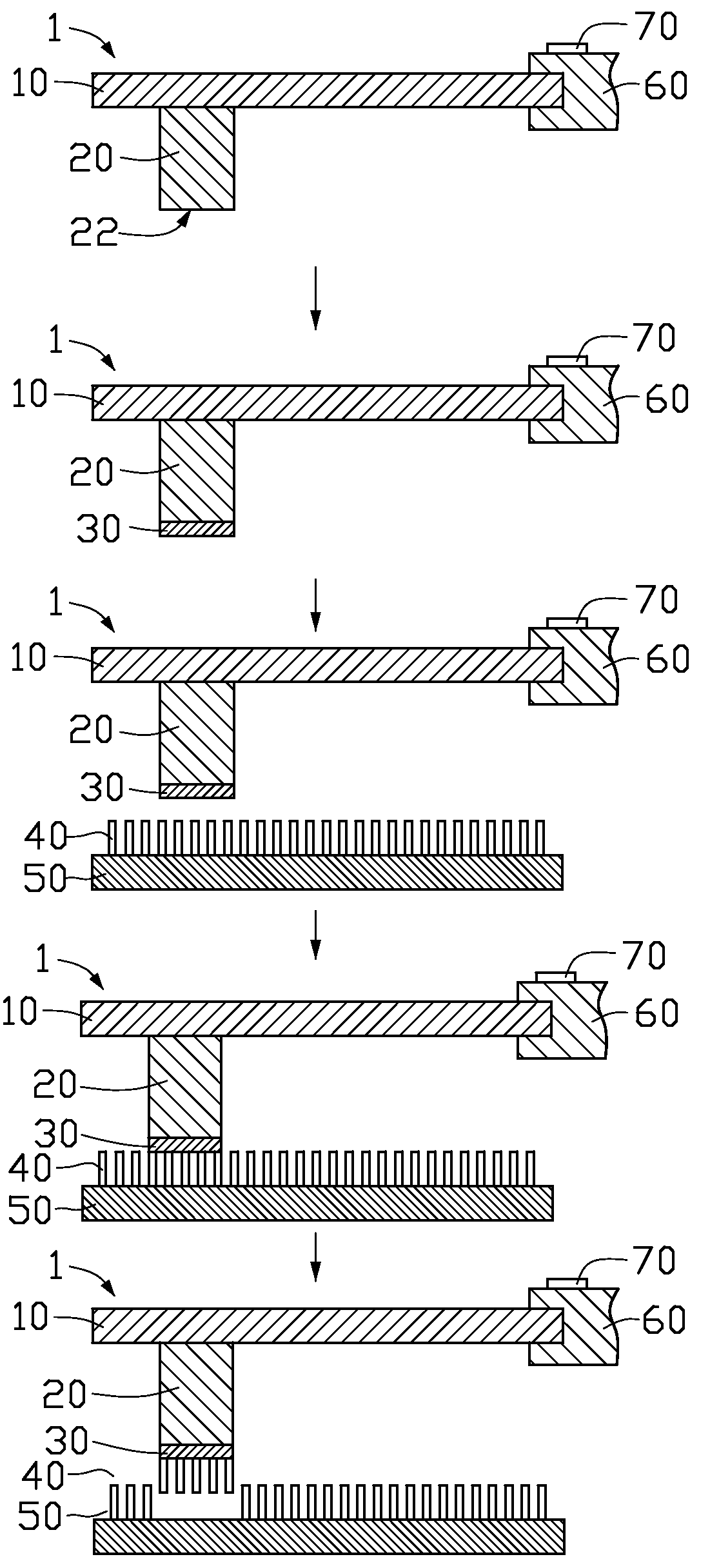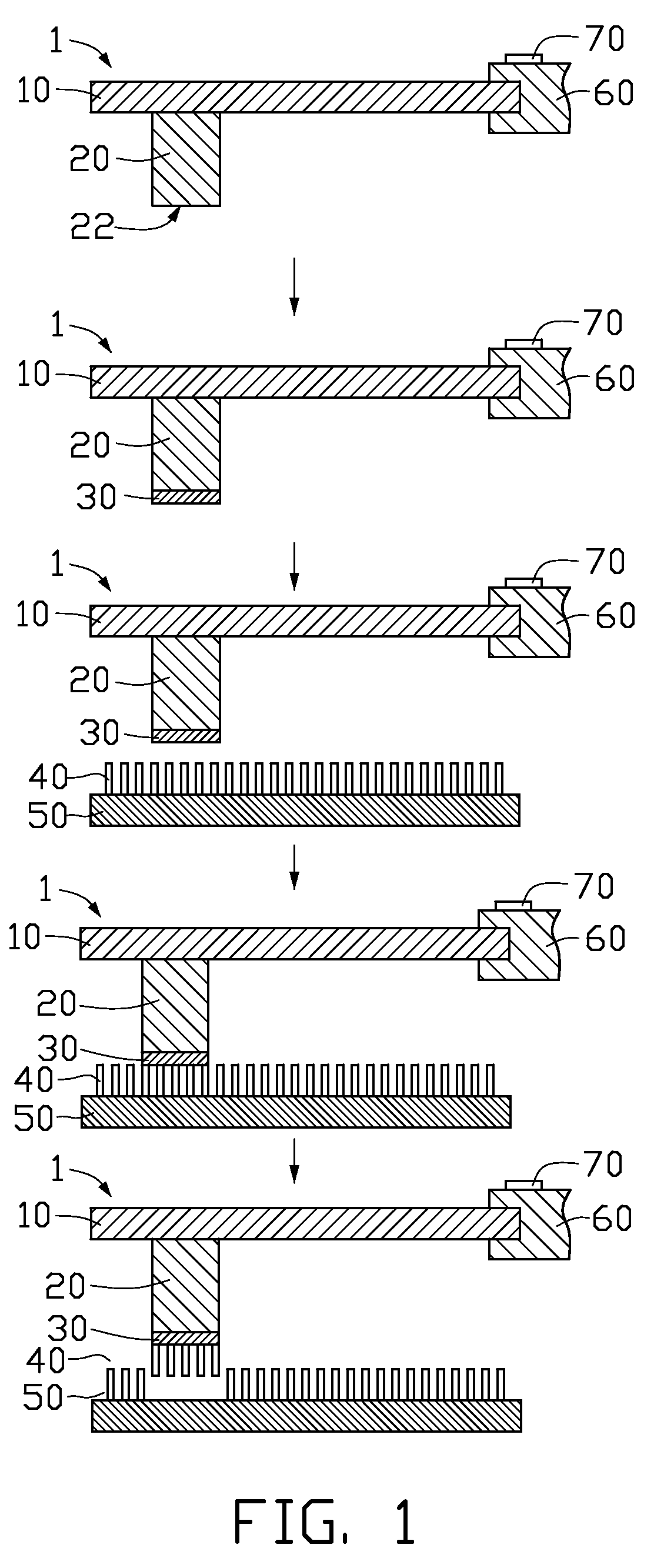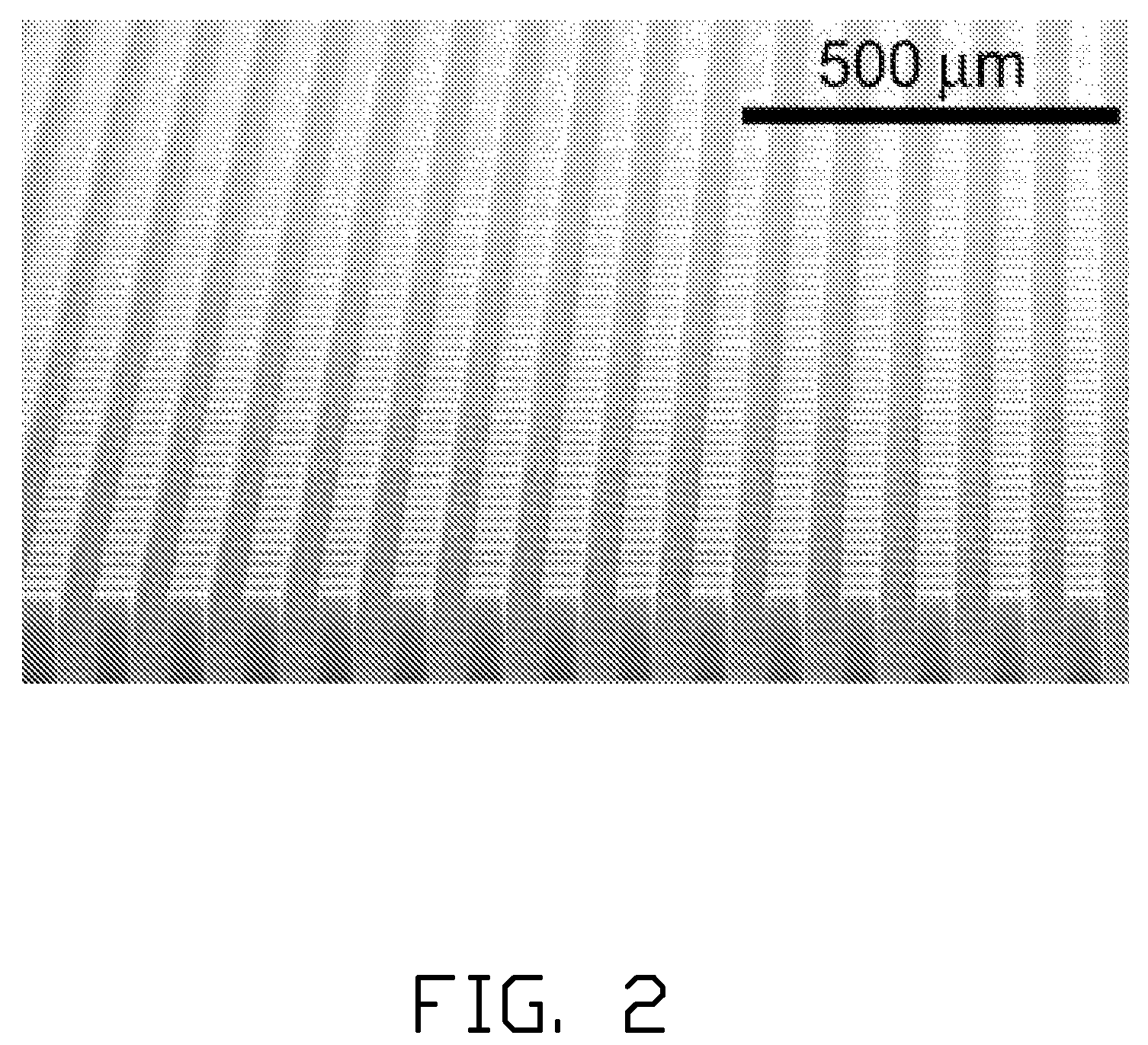Method for measuring bonding force between substrate and carbon nanotube array formed thereon
a carbon nanotube and substrate technology, applied in the field of measuring the bonding force, can solve the problems of incomplete electrical disconnect, unsatisfactory phenomena, electrical discharge,
- Summary
- Abstract
- Description
- Claims
- Application Information
AI Technical Summary
Benefits of technology
Problems solved by technology
Method used
Image
Examples
Embodiment Construction
[0016]Reference will now be made to the drawings to describe at least one embodiment of the present method for measuring a bonding force / strength between a substrate and a carbon nanotube array formed thereon, in detail.
[0017]Referring to FIG. 1, a method for measuring a bonding force between a substrate 50 and a carbon nanotube array 40 formed thereon, wherein the carbon nanotube array 40 includes a plurality of carbon nanotubes, according to a present embodiment, the method includes the following steps:
(a): providing a force gauge 1 including a cantilever 10, a probe 20, a movement mechanism 60, and a force sensor 70, wherein the probe 20 is secured at one end of the cantilever 10 and has a flat surface 22;
(b): forming an adhesive layer 30 on the flat surface 22 of the probe 20;
[0018](c): bringing the probe 20 toward the substrate 50 and, ultimately, into close proximity with the carbon nanotube array 40 by the movement mechanism 60 in order to cause the adhesive layer 30 on the f...
PUM
| Property | Measurement | Unit |
|---|---|---|
| diameter | aaaaa | aaaaa |
| diameter | aaaaa | aaaaa |
| diameter | aaaaa | aaaaa |
Abstract
Description
Claims
Application Information
 Login to View More
Login to View More - R&D
- Intellectual Property
- Life Sciences
- Materials
- Tech Scout
- Unparalleled Data Quality
- Higher Quality Content
- 60% Fewer Hallucinations
Browse by: Latest US Patents, China's latest patents, Technical Efficacy Thesaurus, Application Domain, Technology Topic, Popular Technical Reports.
© 2025 PatSnap. All rights reserved.Legal|Privacy policy|Modern Slavery Act Transparency Statement|Sitemap|About US| Contact US: help@patsnap.com



